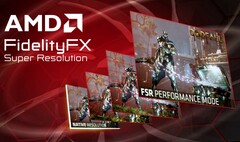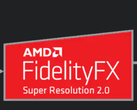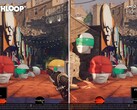It wasn't particularly long ago that resolution scaling was far, far dirtier than any of the above-mentioned options. Before Nvidia first launched DLSS with their Turing generation of GPUs - or, realistically, before the DLSS 2.0 update in March 2020 that made it worth using - PC gamers were stuck with old-fashioned bicubic interpolation that monitors would do if the game's input was at a lower resolution, or games with their own internal scalers that preserved the UI but still savaged the image quality. Even the checkerboarded rendering of the refreshed 8th-gen consoles was often derided for its artefacts.
AMD's FSR 1 was a step forward from these internal scalers, albeit working with a tuned version of the Lanczos algorithm for its spatial upscaling; but FSR 2 when it arrived last May was a full-fat temporal upscaler like DLSS 2.0. It certainly still has its faults - ghosting and flickering can still show up on fine details and fast-moving objects - but DLSS shares many of them, just varying depending on the circumstances.
Discourse over the seeming absence (so far) of DLSS and XeSS from Bethesda's Starfield game might have poisoned the well in terms of upscaler comparisons, but it's still worth bearing in mind that on a technological level, all of these do wonders, and they have consigned the two-decade-old "trick" of cutting native resolution to the dustbin of history.
All three of the current crop of temporal upscalers, including the newcomer XeSS, which provides footage mostly indistinguishable from the others, are a dramatic improvement over the best of the old spatial upscalers; it's just that they've gone from revolutionary technology to being the expected baseline for game technical analyses, in an astoundingly short period of time.
Truth is, the key phrase in this article's opening statement is "minimal loss of visual fidelity" - and anyone who tells you otherwise is making a mountain out of a motion-vector.
Buy an XFX Speedster MERC310 AMD Radeon RX 7900 XT graphics card on Amazon









